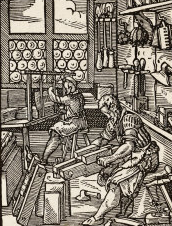“Fever 103°”: Poetics of Paroxysm in the Common Text of Sylvia Plath and Anne Sexton
Keywords:
Plath, Sylvia, Sexton, Anne, Poésie confessionnelleAbstract
This paper centers on the forms of excess which permeate the works of “Confessional” poets Sylvia Plath and Anne Sexton. It suggests that the mirror effect which unites the two poets goes beyond the obvious biographical parallels and beyond matters of mutual influence, and becomes a “special language”, a common poetic grammar which revolves around the predominant trope of a suicidal “fever”. Through the prism of a series of semi-autobiographic personae, the two poets emerge as doubles, as poetic “twins”. In this intertextual network of echoes and contiguous images, the voices and visions of excess mutually contaminate each other and are magnified in a kind of chain reaction, which functions metaphorically as a febrile “infection”. Through an inextricable fusion of pathology and theatricality, the “delirium” of this poetic mode, haunted by the proliferating forms of disorder, acute fragmentation and loss, works toward a poetics of paroxysm, appropriating the inherent ambiguities of the “Confessional” mode to generate a poetic utterance which inevitably leads to excess. Through the lens of the notions of expenditure and sacrifice developed by Georges Bataille, this paper attempts to trace the parabola of this double poetics of excess, as it evolves from an endlessly restaged initial moment of irrecoverable loss, through the radical transgression of gender-roles, the norms of propriety and the limits of sanity, to its culmination in an ecstatic final gesture of self-immolation.
Cet article se propose d’étudier la trajectoire des formes de l’excès dans les œuvres des poètes « confessionnelles » Sylvia Plath et Anne Sexton. L’effet de miroir qui relie les deux poètes va au-delà des parallèles biographiques évidents et de l’influence stylistique mutuelle et prend la forme d’une « langue secrète », d’une grammaire poétique commune qui tourne autour du trope prépondérant d’une « fièvre » suicidaire. A travers le prisme d’une série de personnages semi-autobiographiques, les deux poètes émergent comme des doubles, des « jumelles » poétiques. Une kyrielle d’échos et d’images contigües forment un véritable réseau intertextuel commun dans lequel les voix et les visions de l’excès se contaminent mutuellement et s’exacerbent dans une sorte de réaction en chaîne qui prend la forme d’une « infection » fébrile. Par le biais de la fusion inextricable des associations pathologiques et théâtrales du « délire » de ce mode poétique, hanté par les formes proliférantes du trouble, de la fragmentation et de la perte, affleure une poétique du paroxysme qui se sert du mode « confessionnel » pour engendrer une parole poétique qui mène inévitablement à l’outrance. Dans l’optique des notions de dépense et sacrifice développées par Georges Bataille, cet article essaiera de tracer la parabole de cette double poétique de l’excès, depuis un moment initial de perte irréparable répété sans cesse, à travers une transgression radicale des normes de la société et des limites de la santé mentale, jusqu'au moment où elle atteint son paroxysme dans une série de poèmes mettant en scène un geste extatique ultime d’immolation par le feu.
Published
Issue
Section
License
- Work submitted for publication must be original, previously unpublished, and not under consideration for publication elsewhere. If previously published figures, tables, or parts of text are to be included, the copyright-holder's permission must have been obtained prior to submission.
- Authors of accepted manuscripts will assign to L'Atelier the right to electronically distribute their article, or publish it in any form (Internet, CD ROM, printed copy) but authors will retain copyright and, after the article has appeared in L'Atelier, authors may republish their text (in print and/or electronic form) as long as they clearly acknowledge L'Atelier as the original publisher.


